We generally understand a generic charger as one that is of poor quality, but this is not necessarily the case. Sometimes it could be as good as an original. You should just be careful to choose a suitable brand. If you prefer the original charger for your cell phone, you should make sure to buy it from a reliable place to avoid being sold a counterfeit.
Generic charger vs. original
If we limit ourselves to semantics, the word “generic” refers to the “general” or “all”. Therefore, technically a generic charger is one that works for “all” devices (or at least for several brands). An original charger is the opposite of “general”. It is “specific” for a particular brand of cell phone (in theory, because in practice it does not necessarily mean that we cannot charge other cell phones with it).
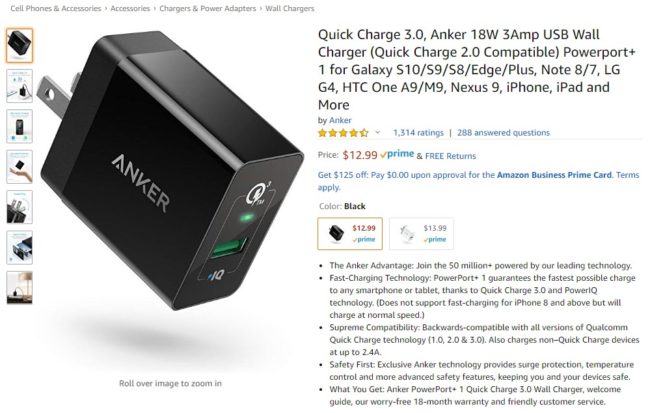

A good generic cell phone charger.
When it comes to buying a charger, the simplest thing is to buy the original charger, since this guarantees that it will charge at the maximum speed that your cell phone supports. However, you must be careful not to fall with an imitation, which is the worst scenario, as we will see below.
Maximum fast charge can also be achieved with a generic charger “GOOD” or from a recognized brand, such as Anker. However, in this case you will have to worry about verifying that the fast charging technology of the cell phone matches that of the charger. For example, if your cell phone is Samsung, you should verify that the charger has «Adaptive Fast Charging» or «Quick Charge» technology.
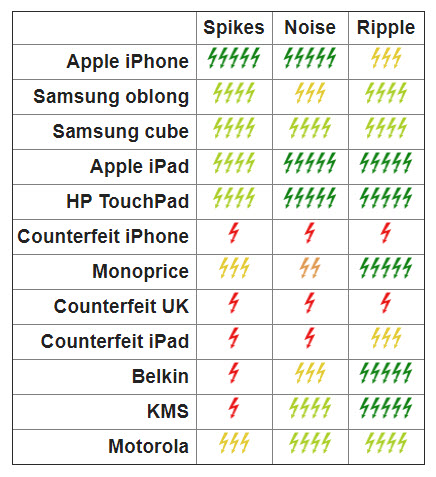

Red = Bad, Green = Good. Note that power spikes are present even in generic brand chargers like Belkin and KMS. However, the ripple and noise may be more noticeable on some original Samsung or Apple chargers.
Despite what has been said, a quality generic charger should be as good as a general original one. There are certain very technical aspects that can affect one more than the other, as can be seen in the table above. “Spikes”, “ripple” and “noise” are undesirable things in electronic devices, which you will not want for your cell phone battery, as they will shorten its useful life. Unfortunately there is no perfect charger that completely eliminates all of this.
Bad generic loader (counterfeit or counterfeit)

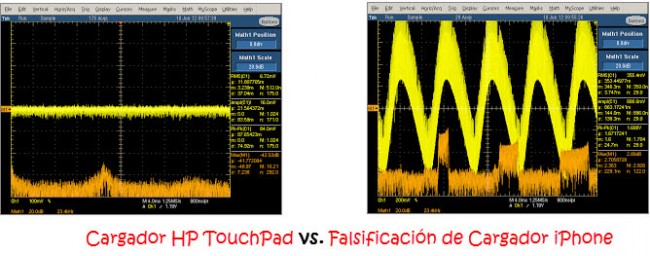
Note the enormous amount of signal ripple, jitter, or ripple to the right, due to lousy filtering and voltage regulation. This is wasted energy that generates additional heat and even malfunction of electronic components.
Bad generic chargers abound on the market, camouflaged under a recognized brand name. That is, imitations, counterfeits (“counterfeit” in English) or generally Chinese clones. And many people fall for them. Definitely these are the chargers that you should avoid, despite their advantageous price.
The downside to these chargers is that they can break manufacturing standards. They may be the most inefficient, unstable, and lowest powered. It wouldn’t be strange if they even end up on fire, exposing your team or your integrity. This is especially true with chargers or cables with a USB C connection, as this standard handles higher energy values.
For example, an imitation charger has poor regulation. It does not ensure a stable flow of energy to the battery. It does not eliminate spikes and variations, which are transferred to the device. This definitely reduces the life of the battery.
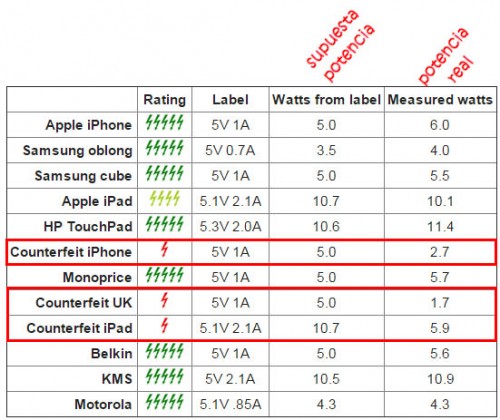

Another problem is that it will take much longer to charge your device. The information recorded in the charger may indicate “5W” or “1A”, but in reality it will only provide half or fraction of that value. To find out if your charger has this problem you can use the Ampere application:

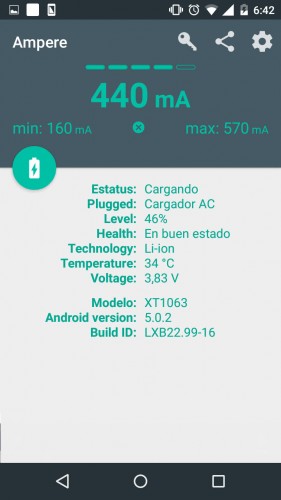

If your phone draws 300 mA without a charger connected (-300 mA on the display), then a 700 mA charger will charge its battery with a maximum current of 400 mA (400 mA on the display).
Description of Ampere in Google Play (Values recalculated based on the illustrations above)
Finally, he is an energy “vampire”. It will consume more electricity than it should and therefore you will surely see that it heats up more than a good quality charger.
How to identify a fake charger
If it is a charger of a too good price or that you found in a street sale you will surely face a counterfeit.
Another way is to know in depth the original charger or the one provided with your cell phone. Specifically, all the textual engraving it has. Most imitations tend to omit or alter some of the original. For example, the brand name.
With information from Righto.com